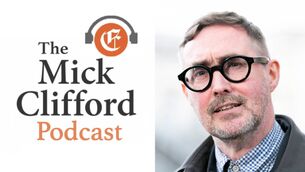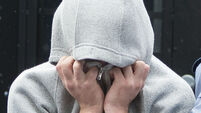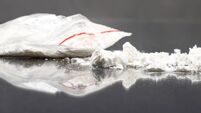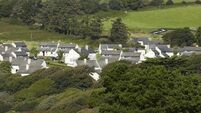I’m a celebrity, get me out there
IN 1858 Charles Dickens, who was born 200 years ago today, went on a reading tour of Ireland. He had already made book tours of Scotland (1841), USA (1842) and Italy (1844).
Having separated from his wife, Catherine, a few months earlier, his travelling companion was his manager, Arthur Smith. He apologised to his (ten) children for not taking them, but his schedule was to be ‘so rapid and comfortless’ that they would not enjoy it.
On Aug 21 Dickens escaped the ‘Great Stink’ in London and sailed at night in ‘very, very, nasty’ seas from Holyhead to Dublin, where he stayed at Morrison’s Hotel on Nassau Street. A keen walker, he wandered around Dublin ‘for 6 to 8 hours in all directions,’ and hired a horse and carriage to see Phoenix Park. But it was to be more of a business visit than a pleasure trip. He had come to Ireland to read extracts from his books, and sell them.
Seeing many of the houses shut for the summer, Dickens was concerned that not many people would attend his readings. But he had no need to worry. Fighting broke out in the agent’s shop to buy tickets, and arriving at the Rotunda (Ambassador Theatre) he had to push his way in through herds of fans.
The building was packed with 3,000 men and women. In the centre of the platform was a small table covered with green cloth and a stand for his book. Behind stood a screen to help project his voice forward into the hall. Overhead, a row of gas jets would throw a flood of light on to him.
Dickens had burst on to the literary scene in the mid-1830s and was now a celebrity. When he appeared at eight o’clock (he was always a stickler over time) the applause had never been ‘more spontaneous, general, or enthusiastic.’ (Freeman’s Journal). Dickens bowed repeatedly in delight.
He read — and, much to everyone’s amusement, acted out — A Christmas Carol. The crowd loved it. ‘Of their quickness as to the humour there can be no doubt,’ wrote Dickens.
His little books of tales could be seen in every bookshop window, and sold from six to 12 dozen each night.
On Aug 27 Dickens left for Belfast: ‘The railway ride from Dublin [is] quite amazing; every cottage looks as if it had been white-washed the day before; and many with charming gardens.’
Coming out of his hotel, a mile from the city centre, he faced a ‘stream of people’ being turned away from the Victoria Hall; and when the doors opened the police could not control the crowd who surged forward, smashing the glass in the ticket offices. Dickens had difficulty getting into the lobby. Men were flattened against walls, ladies ‘stood all night with their chins against my platform. Other ladies sat all night upon my steps.’ Under the strain of numbers some of the ceiling fell with a terrific crash within a few inches of a young lady near his platform.
The next day, Dickens was mobbed by lady admirers who climbed on to the stage to pick up all the geranium leaves he had scattered during a reading of Dombey and Son, and take them home as souvenirs. Others were in tears over Paul Dombey’s death, and filed out in silence.
The tour had got off to a flying start. He had made £340 profit (a whopping £15,000 in today’s money). But he turned down an invitation to read again in Dublin on his return. ‘The work is too hard,’ he said.
After briefly visiting the Giant’s Cradle in Brown’s Bay, and taking a stroll by the sea at Carrickfergus, he set off by train for Cork, arriving there on Monday, Aug 31 and staying at the Imperial Hotel.
Special trains and steamers had been put on so that people could go to hear Dickens read in the evenings, and over 1,000 besieged the Athenaeum (Opera House) for his first reading, A Christmas Carol. The Cork Examiner describes the mad ‘cram in the galleries.’
For two hours the audience was kept spellbound by a brilliant series of impersonations. He spoke ‘with every muscle and line of his face’. Occasionally he would also use his hands, ‘to make Scrooge more miserly, the ghost of Marley more transparent.’ In his ‘speaking glances,’ he looked up at each member of the audience individually. Dickens had an extraordinary talent for capturing accents and dialects. When he read Boots at the Holly Tree Inn about an eight-year-old boy eloping to Gretna Green with a seven-year-old girl there was ‘vociferous laughter’ at his Cockney accent.
On his last night in Cork — a sell-out — Dickens was presented with sketches copied from portraits of him by students from the School of Design. He was so thrilled that he autographed and dated each one.
Again he had little time for sightseeing. ‘We meant to go to Queenstown yesterday… But there is always so much to do that we couldn’t manage it.’ Although he did squeeze in a quarter of an hour at Blarney Castle and kissed the stone.
The final stop in his tour was Limerick where he stayed at the Royal Hotel and read for two nights at the Theatre Royal. When Arthur Smith opened the doors there was the usual great rush — but this time of three ducks! ‘There is not much to be done here,’ Dickens wrote. He only made £40 on the first night.
Yet the great man was not without his critics. One made fun of his formal black dress coat and ‘enormous white neckcloth’ (it was a ‘small tie,’ Dickens retorted); his ‘smart, tripping walk,’ like that of a waiter. And how disappointing it was to see ‘a bald crown and a deeply corrugated, worn face… he looks almost like an old man.’
And ‘why does Mr Dickens say “idear”, “sofar”, “Mariar”?’ It was hardly the pronunciation of a gentleman or a scholar, more like that of a common Cockney. The Limerick Chronicle complained that Dickens recited several passages ‘in a sing-song, schoolboy style.’
In a letter from Dublin, Dickens described himself as a ‘galley-slave.’ He said: ‘I seem to be always either in a railway carriage, or reading, or going to bed.’ Having to adapt every night to a new audience had become a ‘tremendous strain.’
Dickens returned to visit Dublin and Belfast again in 1867 and 1869. In his first visit to Ireland he had refused to go back to Dublin to give further readings. He would have been wise to refuse more often. The consequences would take a terrible toll on his health and would contribute to his early death from a stroke in 1870, at the age of 58.
On 4 September 1858 Charles Dickens returned to his home at Gad’s Hill Place, near Rochester in Kent, and opened his diary. Ireland, he wrote, had been ‘something wonderful.’















